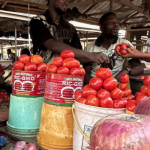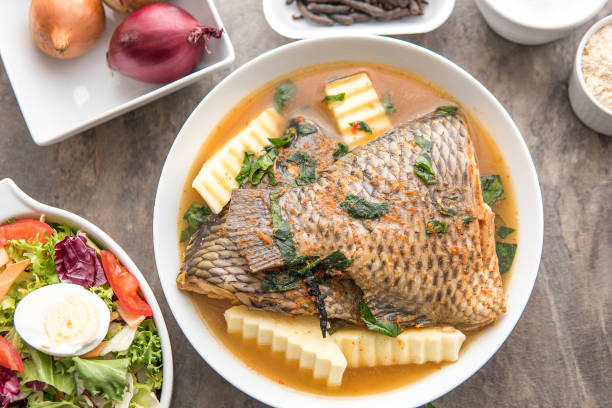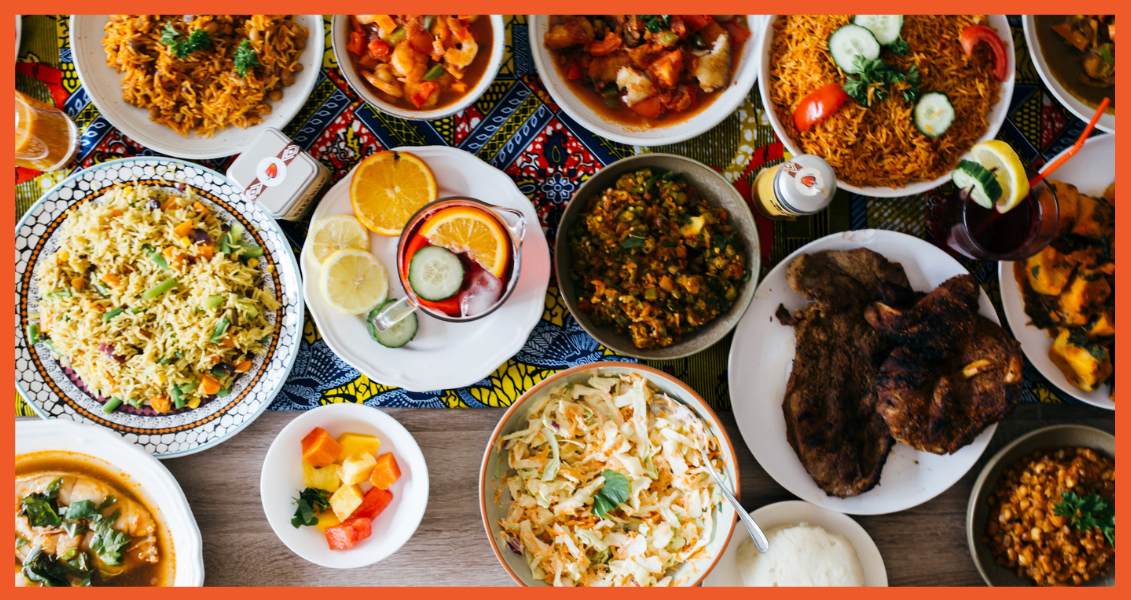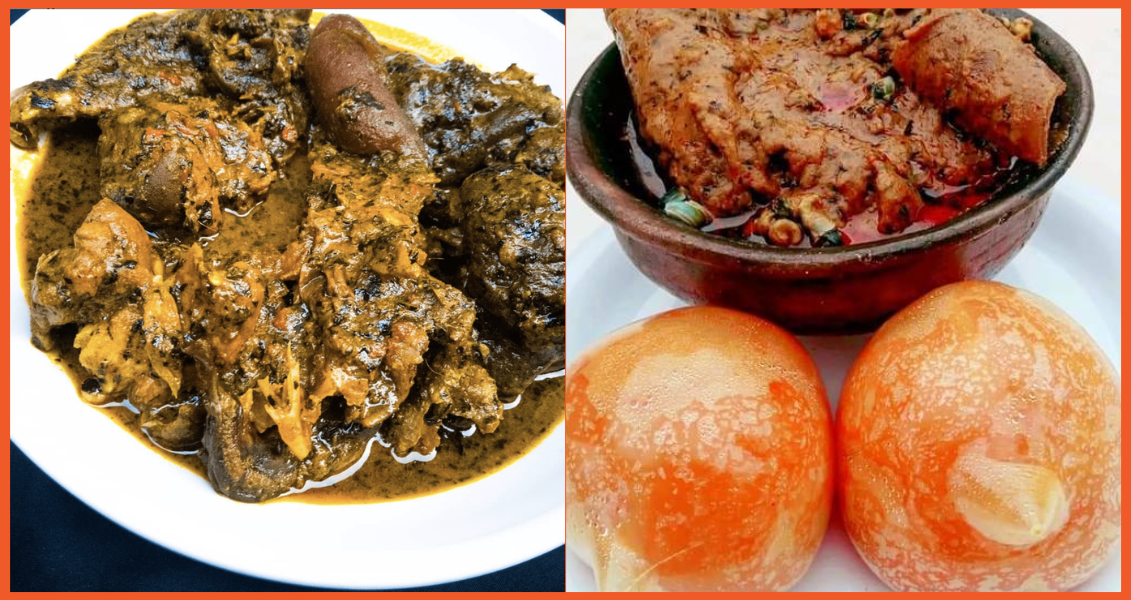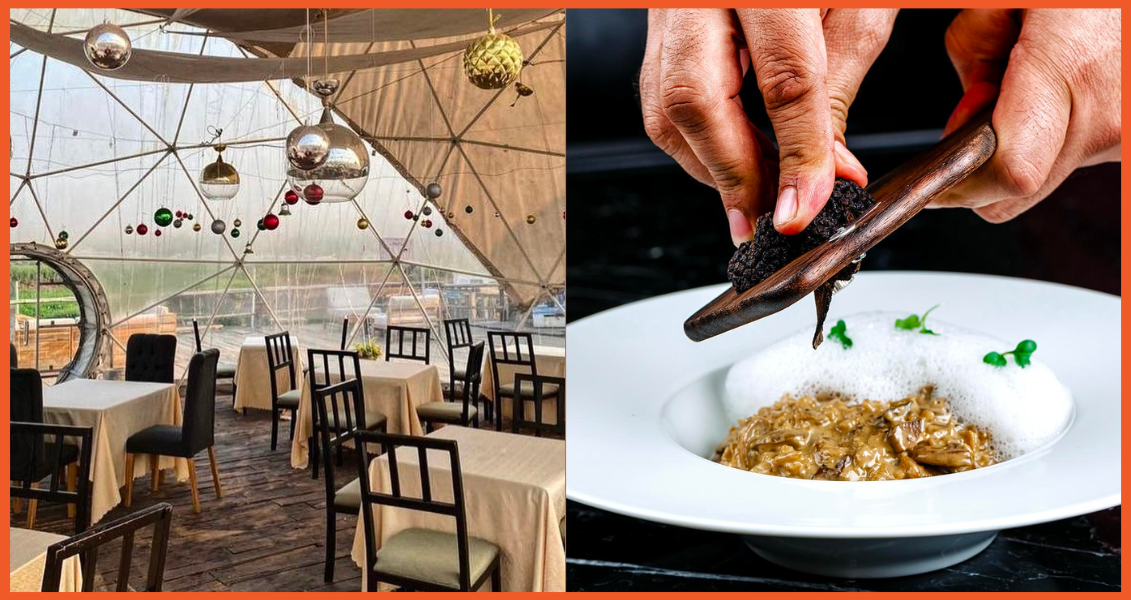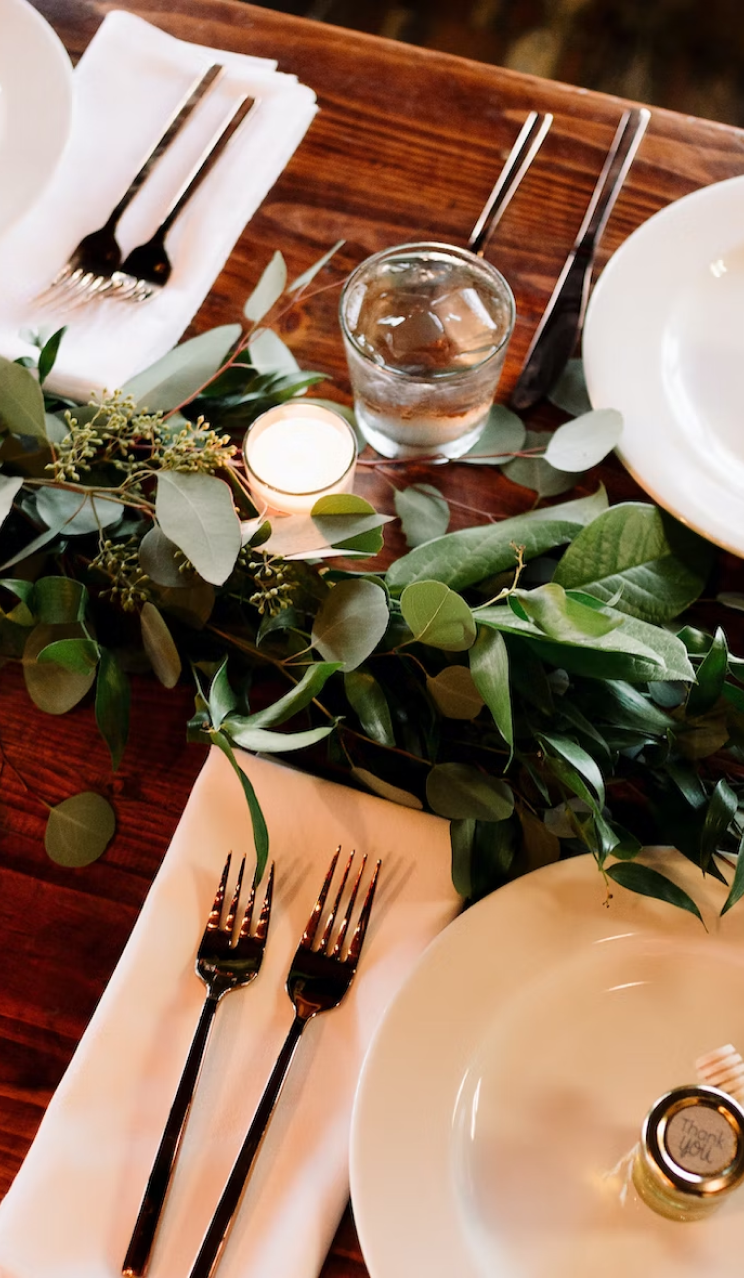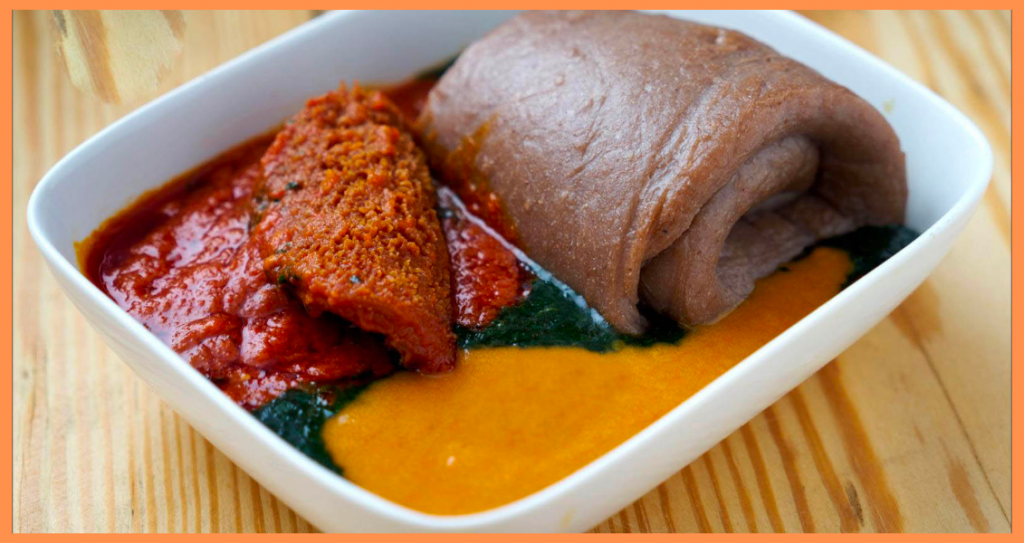
On any other day, I’d have started this piece saying greed is the only reason anyone wants to eat amala that costs more than ₦5k, but today isn’t that day.
Amala is made from yam, cassava flour, or unripe plantain flour; it’s a staple in Yoruba households, usually paired with ewedu, gbegiri (abula), stew and protein of choice. The process of getting Amala done isn’t the easiest — first, you bring water to a boil, pour in some elubo, turn it on fire until you get your desired consistency and there’s no lump, put some more water into it, close the pot, let it cook for 5-10 mins, remove it from the fire, turn it until it’s smooth, and serve with your choice of soup. As you can see, the process is long and requires some arm workouts.
The tedious process of preparing your amala is one of the reasons why you’re more likely to see it sold at a bukka than being prepared in a home kitchen, making joints that sell it some of the most popular spots in Southwestern Nigeria. It’s also why Amala Skye has become a landmark and tourist attraction in Ibadan. Most bukkas that sell it don’t sell it alone; they sell other foods, but most other foods don’t require all your time and energy to be cooked at home.
Bukka stew hits different. It’s not the recipe your grandma, mum or sister can teach you, except they own bukkas themselves. There’s a je nais se quois in the taste and a secret ingredient (I like to think it’s Ajino moto, but maybe it’s also the sweat of cooks and the heat of the outdoor firepits, who knows?). Other key elements that add to the flavour when it’s bought in bukkas include disrespect, overfamiliarity and the salt from the sweat from the women turning the amala on fire until it’s a silky, lumpless mould.
Amala sold in bukka is priced per scoop; one scoop is small enough to fit into an igbako but needs to be bigger to fill an adult. When you place your order for the number of scoops you want, the amala seller makes a precise circle in the middle of the amala into which they’ll serve your soup. Stew, ewedu, gbegiri, beef, ponmo, or whatever soup you ordered will float in the middle of the amala and ewedu or abula. One morsel to go with more than enough soup — bukka food must always come with generous servings of soup.
Although it has now been gentrified and introduced to the menus of many a high-end restaurant, like a token minority hire, the attendant prices and bougie aesthetic take away from the authenticity of the meal. A restaurant-bought amala hardly has the delightfulness of one bought from the rude amala vendor down your street.

Even with the yassification of amala, the price point attached to the meal in many upscale restaurants is unjustifiable. Amala shouldn’t come with a one-size-fits-all price. It’s a meal forged in the heart of the trenches, not made for upscale restaurant culture or elaborate menus.
Amala is best enjoyed when you pick and choose all the elements you want; when you can point to the meat or fish you want and tell them to add it to your plate. Not straitjacketed into carefully curated menus. You don’t wait to be served amala; you must stand in a queue, stretch out your hands, carefully craft your order and pray the seller doesn’t cuss you out. Amala that you can eat in a well-furnished air-conditioned room with polite waiters is that one amala?
Putting an actual price on this great meal is taking away choice from the customer and forcing satisfaction on them. It’s hoping they trust you and enjoy whatever is on the plate for them. Even with an obviously stated number of scoops, pieces of meat and picture size, the definite price point method in restaurant menus doesn’t work for the greatness of amala. It is a meal that must not fit into a fancy box.
If you’ve never had the experience of eating amala from a place that’s not well-lit with air conditioning, we’d advise you to do so and start enjoying life. We’ve compiled a list of bukkas in Nigeria where you’ll get the whole bukka experience to be well worth your money.
- Ose-Olohun Food Canteen (Sky lolo, Amala Skye), Bodija, Ibadan — View in Google Maps
- Amala Pension, Issac John, Lagos — View in Google Maps
- Amoke, Palmgrove, Lagos — View in Google Maps
- Mama Ope, Ojú rìn, Ibadan — View in Google Maps
- Iya Oyo, Wuye, Abuja — View in Google Maps
- Olaiya, Surulere, Lagos — View in Google Maps









